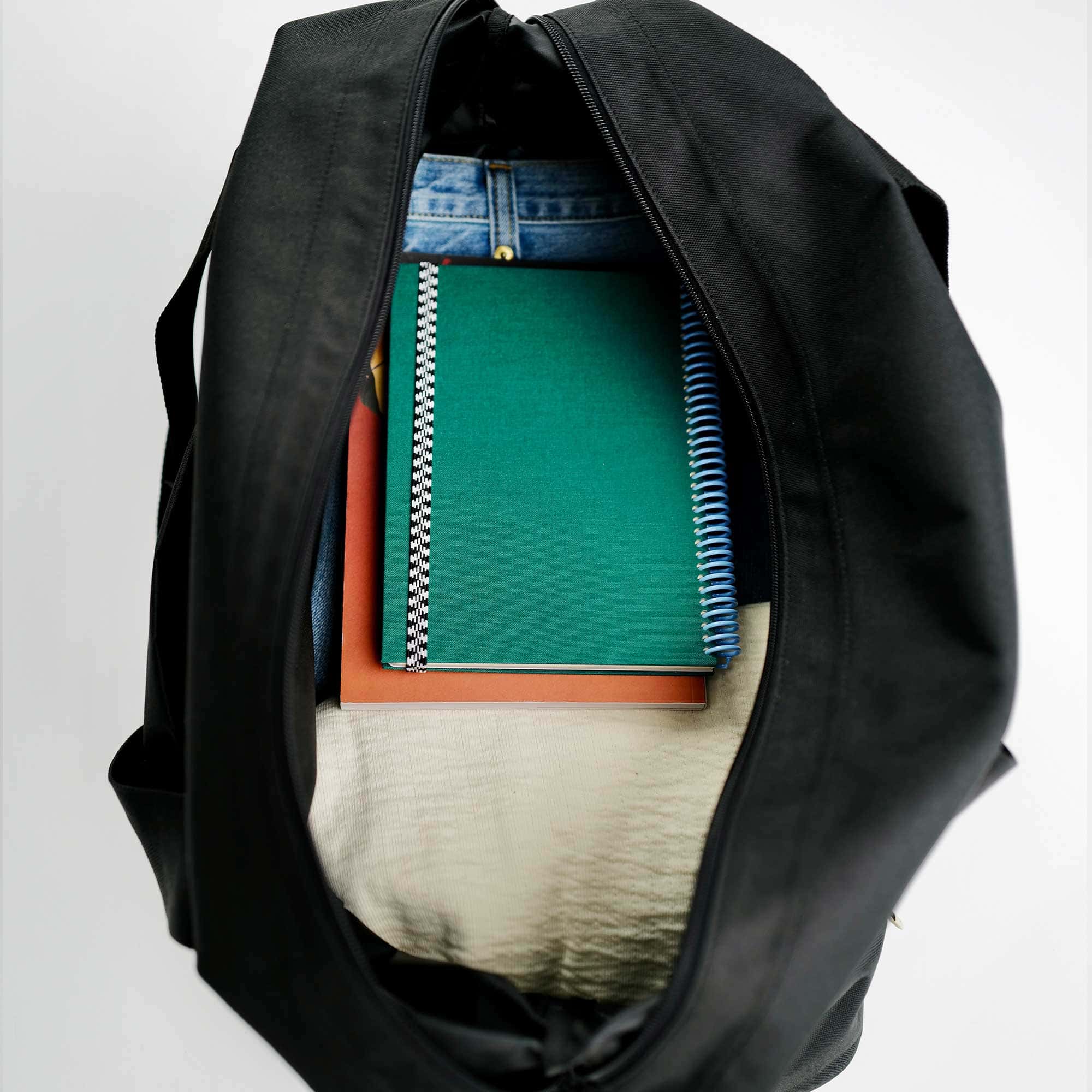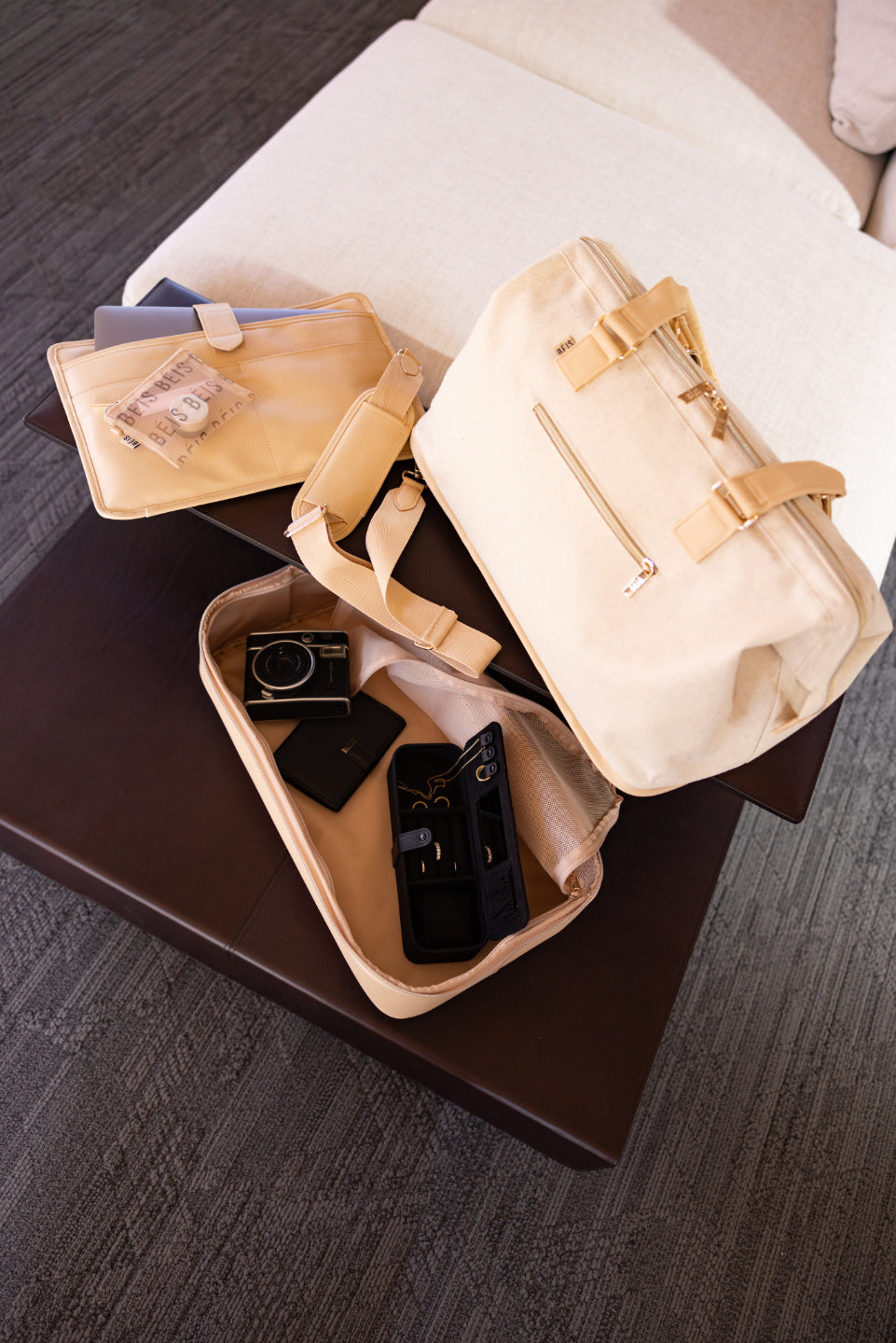When it comes to traveling and what to pack for a weekend trip, there are all sorts of handy tips and tricks to help make the experience enjoyable. From suitcase must-haves to safeguarding your money, there’s a lot to learn if you want to be a smart and savvy traveler.
High on the list of travel tips you’ve probably heard about is how to pack a suitcase efficiently. This debate has largely centered around two methods: the folding method and the rolling packing technique.
Representatives from both camps are armed with reasons why each option is best—sometimes resulting in contradictory information that can leave the novice traveler confused.
Whether you’re going around the world in 80 days or just taking a long weekend to visit family out of state, knowing whether to fold or roll the clothes in your luggage can help you pack appropriately—and avoid costly airline fees.
The Great Folding and Rolling Debate
Proponents of rolling your clothes for travel swear that rolling maximizes suitcase space, cuts down on wrinkles in most clothes, and saves you time during the packing process.
Then again, those on the other side of the aisle make a lot of similar claims about folding your clothes before packing them. Those who believe in folding clothes for packing will also tell you that folding is the fastest, easiest way to keep your wardrobe wrinkle-free inside your travel bag.
With both sides saying the same thing, who do you believe?
The truth is, both methods present a range of pros and cons. The specific items you’re packing into your suitcase, the number of items, and what you hope to bring back with you should all be considered when determining when to fold or roll.
Folding: Pros and Cons
Folding is the traditional method of storing most items of clothing, whether for travel or everyday use. With the exception of clothes that are hung on hangers, you probably fold everything from t-shirts to jeans to certain dresses. Even in stores, button-up shirts and other items are often folded for display.
This is part of what makes folding the go-to method of so many people—for many of us, it’s already a habit. This can make quick and easy work of packing for a trip and save you time.
But folding isn’t always the right choice for all items of clothing. Here are two key things to keep in mind when deciding whether you should fold your clothes for travel:
- Clothing Fabric – Clothes that are made from sturdy fabrics like denim, canvas, corduroy, wool, and suede usually benefit from folding.1 Thick fabrics tend not to roll up so well, so folding your favorite wool sweater or pair of corduroys can actually free up more space in your suitcase. Likewise, super-light materials like linen or silk usually travel better when they’re folded.
- Clothing Type – For some items of clothing like button-up shirts, jeans, and pants, folding can be a good way to make sure your clothes arrive at your destination sans wrinkles.
Always remember that if you’re taking formal wear with you on your trip—like gowns, suits, or tuxedos—they should always be packed in a garment bag. Garment bags are designed for keeping formal wear in pristine condition. And they’re available in a variety of sizes and styles to meet all your travel needs.
Folding Considerations
Although folding your clothes might be the right choice in some instances, it can be a dreadful mistake in others. Despite its advantages, folding your clothes for travel can present the following drawbacks:
- Doesn’t maximize space – On the whole, folding your clothes before packing them into your suitcase is going to take up more space than rolling. Folded clothes take up more space and leave gaps that are too small to be filled by other folded items.
- Not as accessible – When your clothes are folded, they’re most likely going to be stacked on top of one another in the suitcase. This makes it difficult to access the clothes on the bottommost layers. Unless you’re willing to plan out the order in which you’re going to wear your clothes, folding them might actually take more time in the long run. Aside from that, the clothes at the bottom of the suitcase are more likely to take on unsightly wrinkles and creases.
- Not good for medium or thin materials – Less structured clothes made from thin materials, like t-shirts made from cotton or polyester, definitely won’t survive a long flight if they’re folded. Be prepared to unearth a pile of creases and wrinkles when you arrive at your destination.

Rolling: Pros and Cons
The rolling method is one of the best-kept secrets of packing your clothes for travel. It might seem strange at first, but smart travelers know that rolling your clothes for packing is the best way to optimize suitcase space and make sure your clothes are always ready to wear.
But just like the folding method, some items of clothing roll better than others. If you’re packing up the following items, the rolled packing technique is the way to go:
- T-shirts
- Swimsuits
- Shorts
- Socks/undergarments
- Sweatpants
- Tank tops
- Casual dresses
Medium weight and synthetic fabrics also lend themselves well to the rolling method. Keep in mind that heavy materials, bulky clothes, delicate items, and button-ups won’t roll up as easily.
Rolling Considerations:
The cons of rolled clothes are the same cons as packing clothes for travel in general—no matter what you do, some rolled items are going to wrinkle in the suitcase, and you’re going to have to make some difficult choices about what to take with you.
But there’s more than one reason so many travelers swear by rolling. Rolling your clothes can lead to:
- Fewer wrinkles, creases, and fold lines – While a few wrinkles are unavoidable, for most clothes, rolling can drastically cut down on the number of wrinkles, creases, and fold lines you encounter when you open your suitcase.
- Better use of suitcase space – For the most part, rolling your clothes is the best way to optimize the space inside your suitcase. It makes everything more compact, meaning you can fit more of what you need into your suitcase.
- Better suitcase organization – When your clothes are tightly rolled, it’s easier to organize them in your suitcase. Rolling also means that everything is immediately visible and accessible. You can even pack your rolled clothes vertically, so there are no hidden bottom layers. To really take your organization to the next level, you can separate your rolled clothing items using packing cubes that lay nicely within luggage.
How to Roll Your Clothes for Packing
If you’ve never rolled your clothes for packing before, the prospect can seem kind of daunting. But it doesn’t have to be difficult. The process is a little different depending on the clothing item you’re rolling, so let’s look at how to roll clothes for packing.
Rolling Shirts
Rolling shirts is relatively quick and easy. T-shirts and other medium-weight tops especially benefit from rolling. Here’s how to do it yourself in three easy steps:2
- Spread the shirt out so that it’s as flat as possible. Use your hands to make sure there are no wrinkles, creases, or folds in the shirt.
- For shirts with short sleeves, fold sleeves inward, toward the middle of the shirt. The sleeves should meet in the middle, even overlapping some. Just be sure to smooth out any wrinkles that folding the sleeves might cause. For shirts with long sleeves, angle each sleeve across the shirt on the diagonal.
- Begin rolling upwards from the bottom hem of the shirt, smoothing out any wrinkles along the way. You can roll the shirt as loosely or as tightly as you want. The tighter you roll, the smaller your shirt will be and the more space you’ll have in your suitcase.3

Rolling Pants
The process for rolling pants is only slightly different from the process for rolling shirts. Here’s how to do it:
- Begin by laying the pair of pants out face-up. Be sure to smooth out any wrinkles.
- Fold the pants in half so that the waistline is even and the right and left pockets are folded face-to-face. Also, make sure the pant legs are in line with one another.
- Begin rolling from the top of the pants or the waistline toward the bottom, taking care to smooth out any wrinkles along the way.
Roll Into Your Destination In Style
Now that you know all about rolling up clothes when packing for any trip, you’re ready to travel the world. And nothing pairs better with your savvy travel skills than a top-quality suitcase or travel bag from BÉIS.
Our line of luggage, weekender bags, and other travel accessories are stylish and durable enough to go wherever your travels take you. Tricked out with enough pouches, pockets, and compartments, they offer the most organized traveling experience possible. And with our weight limit indicators, you’re guaranteed to never exceed the airline’s weight limit.
The world is full of places to go.
So, start rolling (or folding), and always remember to travel in style—with BÉIS.
Sources:
- "Folding vs Rolling Clothes for Packing". TravelFashionGirl. https://www.travelfashiongirl.com/folding-vs-rolling-clothes-for-packing/
- Julie Nylon. "How to Roll Clothes". WikiHow. July 19,2021, https://www.wikihow.com/Roll-Clothes
- Ryn Gargulinski. "Should You Roll or Fold Your Clothes When Packing?".TravelTips.USAToday.com. April 25, 2018, https://traveltips.usatoday.com/should-roll-fold-clothes-packing-21659.html












